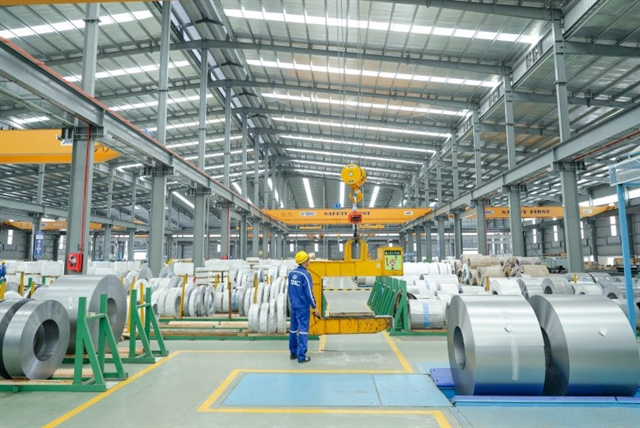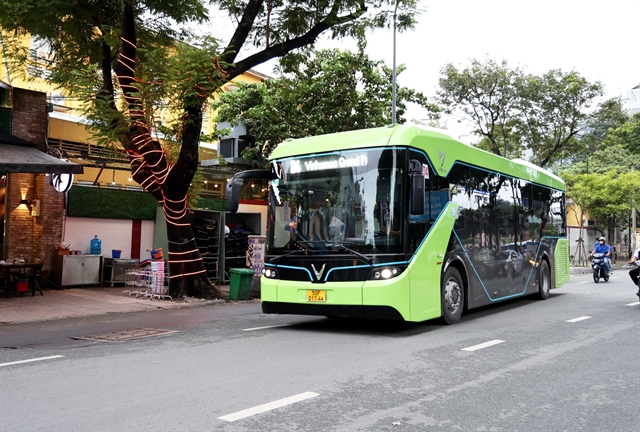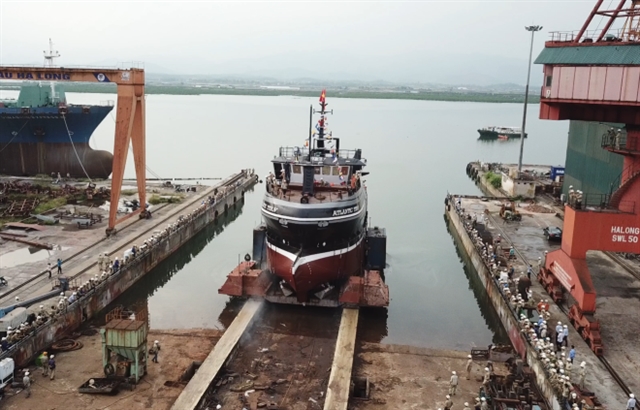 Economy
Economy

 |
| A fishing trawler built by the Ha Long Shipbuilding Company, a subsidiary of SBIC, in 2018. — Photo SBIC |
HÀ NỘI — A process has begun to allow the Việt Nam Shipbuilding Industry Corporation (SBIC) to declare bankruptcy, according to Deputy Minister of Transport Nguyễn Xuân Sang.
The Ministry of Transport (MoT) says the bankruptcy was, at this point, an inevitable conclusion and the ministry is now aiming for an overhaul of the corporation's core businesses while trying to retain as many experienced managers and workers as possible.
Established in 2013, SBIC was formed through the reorganisation and restructuring of the Vinashin Group. At that time, its charter capital was over VNĐ9.5 trillion (US$390 million). However, SBIC had to bear the debt burden left by Vinashin, totalling over $4 billion.
Meanwhile, the bankruptcy will allow profitable subsidiaries to thrive by freeing them from their parent corporation's old and existing debt. A recent report by the ministry said while the corporation's ship-building businesses have consistently been able to turn a profit in the last few years, they were not sufficient to meet financial obligations inherited from the Vinashin era.
Vinashin, officially known as the Vietnam Shipbuilding Industry Group, is a State-owned enterprise in Việt Nam involved in shipbuilding, ship repair, and maritime industries. Between the years 2000 and 2010, Vinashin faced financial difficulties and a significant debt crisis due to mismanagement, cost overruns, and a lack of transparency.
Funds obtained from the liquidation of the company and assets will be utilised according to bankruptcy laws, including debt repayment, salary payment, and social insurance for workers, remaining from the Vinashin period, according to the MoT.
Earlier this week, the MoT conducted a full evaluation and review of SBIC's businesses and subsidiaries across the country. The ministry has started building a detailed roadmap aimed at maximising capital and asset recovery while minimising the use of additional State budgets.
In a meeting with SBIC's managers, the deputy minister said the bankruptcy includes the transfer of ownership of the corporation. Once completed, it will allow SBIC's member shipbuilding companies to enter a new phase, free from the burden of old debts, so they can have more proactive control in their production and business activities, ensuring greater efficiency.
SBIC was asked to complete the personnel reorganisation, address difficulties, and coordinate with the Business Management Department under the Ministry of Transport to facilitate the bankruptcy procedures for its member companies.
Regarding the corporation's existing workers, Sang said that the bankruptcy is aimed at creating conditions for business revival and restructuring activities. Therefore, regardless of the owner, there is still a significant need for an experienced management team and labour force within the existing businesses.
Following the process, member units and SBIC will submit bankruptcy procedures to the court. Once the court opens the case and declares bankruptcy, the liquidation of assets, obligations, and payment priorities will be carried out according to the court's ruling. During this process, actively operating units with existing contracts will continue their normal operations.
In an earlier development, the MoT sent a document to SBIC requesting a thorough assessment of the situation of each business, compiling documents, and developing specific plans for each enterprise. The affected units include the parent company SBIC, its subsidiaries (seven companies), and 147 former Vinashin member businesses that have not completed restructuring. — VNS




